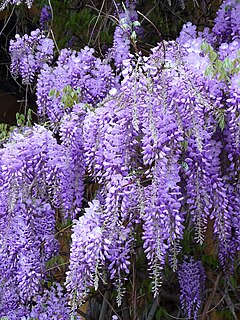
Wisteria is a genus of flowering plants in the legume family, Fabaceae (Leguminosae), that includes ten species of woody climbing bines that are native to China, Korea, Japan, and the Eastern United States. Some species are popular ornamental plants. An aquatic flowering plant with the common name wisteria or 'water wisteria' is in fact Hygrophila difformis, in the family Acanthaceae.

Pieris is a genus of seven species of shrubs in the family Ericaceae, native to mountain regions of eastern and southern Asia, eastern North America and Cuba. Known commonly in North America as andromedas or fetterbushes, they are broad-leaved evergreen shrubs growing to 1–6 metres tall and 3–10 ft (0.9–3.0 m) wide. The leaves are spirally arranged, often appearing to be in whorls at the end of each shoot with bare stretches of shoot below; they are lanceolate-ovate, 2–10 cm (0.8–3.9 in) long and 1.0–3.5 cm (0.4–1.4 in) broad, leathery textured, and with an entire or serrated margin. The young leaves in spring are typically brightly coloured. The flowers are bell-shaped, 5–15 mm (0.2–0.6 in) long, white or pink, and arranged in racemes 5–12 cm (2.0–4.7 in) long. The fruit is a woody capsule which splits into five sections to release the numerous small seeds.

Iris ser. Longipetalae is a series of the genus Iris, in Iris subg. Limniris.

Wisteria floribunda, common name Japanese wisteria, is a species of flowering plant in the family Fabaceae, native to Japan. Growing to 9 m (30 ft), it is a woody, deciduous twining climber. It was first brought from Japan to the United States in the 1830s. Since then, it has become one of the most highly romanticized flowering garden plants. It is also a common subject for bonsai, along with Wisteria sinensis.

Garuga is a genus of shrubs and trees in the family Burseraceae. Members are found in Asia and America.

Justicia floribunda is a species of flowering plant in the acanthus family Acanthaceae, native to Brazil.
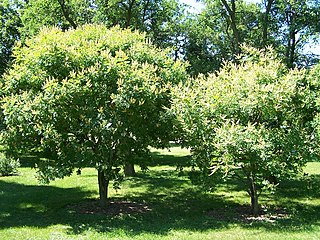
Maackia is a genus of flowering plants in the legume family, Fabaceae. There are about 12 species, all native to eastern Asia, with six endemic to China. The generic name honors the botanist Richard Maack.

Acacia floribunda is a perennial evergreen shrub or tree. It is a species of wattle native to New South Wales, Queensland and Victoria, but is cultivated extensively, and has naturalised in South Australia, Tasmania and Western Australia, and also in Indonesia, Mauritius and northern New Zealand. Common names for it include gossamer wattle, weeping acacia and white sallow wattle. It grows up to 6m in height, but there is a commercial form available which only grows to about 1m tall. Its cream-colored flowers occur in the early Spring.

Unonopsis is a genus of plant in family Annonaceae. It contains the following species :

Hackelia floribunda is a species of flowering plant in the borage family known by the common names large-flowered stickseed and manyflower stickseed.

Waterhousea floribunda is a rainforest tree of eastern Australia. It grows along streams from the Williams River near Dungog to Mackay in central eastern Queensland. Known as the weeping lilli pilli, this tree is widely planted as an ornamental. Planted trees from 1827 may be seen at the Royal Botanic Gardens, Sydney. However, these trees are damaged and threatened by the roosting grey headed flying foxes. A very large tree is located at Western Park in Auckland, New Zealand.
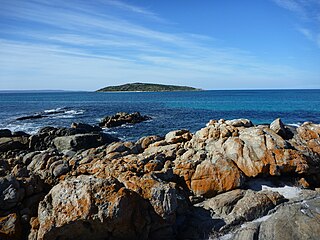
Cape Riche is a cape and rural locality in the Great Southern region of Western Australia. By road, it is 525 km south-east of Perth and 123 km north-east of Albany

Olearia floribunda, commonly known as heath daisy-bush, is a species of flowering plant in the family Asteraceae.
Sam McGredy refers to four generations of Northern Irish rose hybridizers. Sam McGredy I founded the family nursery in 1880. Sam McGredy II focused the nursery on roses in 1895. Sam McGredy III took over in 1926, and was the first to name roses after family members. Sam McGredy IV moved operations to New Zealand in 1974 to escape IRA death threat during The Troubles, and focused on Floribundas, Hybrid Teas and Grandifloras, including 'Paddy Stephens', 'New Zealand', and 'Kathryn McGredy'; and the hand-painted roses such as 'Regensberg'.
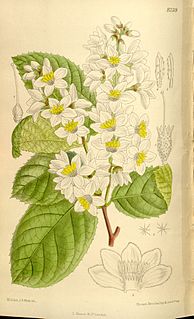
Styrax hemsleyanus (老鸹铃), the Hemsley snowball, is a species of flowering plant in the family Styracaceae, native to central China. Growing to 12 m (39 ft) tall by 5 m (16 ft) broad, it is a conical deciduous tree with large rounded leaves, 12 cm (5 in) long, and clusters of cup-shaped flowers in early summer.

Pieris floribunda is a North American species of broadleaf evergreen shrub, a member of the fetterbush genus in the blueberry family (Ericaceae). It is commonly known in North America as mountain fetterbush or mountain andromeda. All parts of Pieris floribunda are poisonous if ingested. In landscapes it should be grown in full to part shade, out of windy locations, and have a good quality soil with much organic matter with acidity of pH 4.5 to 6.5.
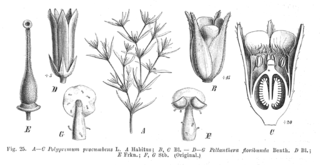
Peltanthera is a genus of flowering plants containing a single species, Peltanthera floribunda. The genus was originally placed in family Loganiaceae and has since been variously placed in Buddlejaceae, Scrophulariaceae, Gesneriaceae, or in its own family Peltantheraceae. As of 2016, it is considered by the Angiosperm Phylogeny Group to be unplaced in any family, but within the order Lamiales.

Iris series Spuriae are a series of the genus Iris, in Iris subg. Limniris. They are sometimes commonly known as butterfly irises.

Nuxia congesta, commonly known as brittle-wood, is a species of tree in the Stilbaceae family, with an extensive range in the Afrotropics. The species is named congesta for its dense inflorescences.

Rosa 'Scentimental' is a red and white striped Floribunda rose, created by Tom Carruth in 1996. The rose was named an All-America Rose Selections winner in 1997.


















